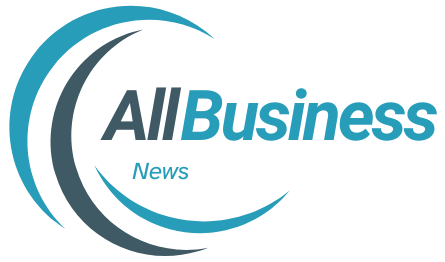In an age addicted to bold disruption, few labels elicit as much speculation as Corpenpelloz. Glancing through fringe tech boards, late-night Slack chats, or the back pages of speculative venture newsletters, the name keeps resurfacing in bold font and question marks. Curiosity festers behind the repeated query: What, precisely, is Corpenpelloz—a platform, a movement, a one-off gizmo, or something that refuses easy description?
This essay attempts to lay a coherent trail, tracing the origin, stated purpose, and possible aftershocks of Corpenpelloz while taking stock of why it has begun to register on the wider radar.
The Origin of Corpenpelloz
The label itself sounds abstract, almost as if it landed from a distant lexicon, yet insiders point to its deliberate origin in the overlapping fields of corporate strategy and artificial cognition. It probably mixes corporation with a bend of intelligence and the suffix pelloz, a nonce ending that offers no obvious translation but hints at fluidity and future shape.
Corpenpelloz first flickered across digital backchannels in late 2024, whispered by stealth-mode builders, blockchain observers, and a handful of early-stage investors who politely stopped short of saying what it could do. Over weeks the signal grew louder and the echo clearer, eventually revealing a blueprint for an upgraded framework of decentralized corporate intelligence—though even that description, some warn, slides toward understatement.
So, What Is Corpenpelloz?
Corpenpelloz presents itself as a decentralized framework that aims to overhaul corporate stewardship of knowledge, AI-informed choices, and digital workflows spread out across global networks. One could liken it to an adaptive spine woven from strands of blockchain, machine intelligence, and an ever-expanding web of collaborative partners.
In everyday language, Corpenpelloz gives firms and independent creators a sturdy vault in which to lock, automate, and stretch their operations without anchoring to the old-fashioned, central command-and-control towers.
The broader ambition is straightforward yet grand: set organizational smarts free so that AI agents, self-executing contracts, and plug-and-play platforms can mingle without the usual permission gates.
Key Features of Corpenpelloz
Four standout beams brace this edifice:
1. Decentralized Decision-Making
Thanks to AI-driven consensus algorithms and on-chain petition logs, the framework lets businesses scatter their decision-making power rather than stack it at the top. Command hierarchies need not vanish, but they no longer monopolize every lever.
2. Interoperability Hub
Corpenpelloz comes outfitted with modular APIs that snap into familiar applications—CRMs, task boards, bookkeeping suites—so teams can swap information and instructions in real time, no painful migration required.
3. AI-Enhanced Knowledge Management
Context-sensitive machine-learning routines sift, tag, and—even upon request—draft corporate lore on the fly. Such agility shrinks onboarding windows, sharpens reporting, and generally nudges daily workflows toward the intelligent end of the spectrum.
4. Smart Contract Automation
Corpenpelloz weaves programmable logic directly into its fabric. A user can instruct the system to trigger payouts, flag HR approvals, or orchestrate supply-chain hand-offs, and the underlying smart-contract engine will execute those orders without human intervention.
5. Token-Based Rewards Framework
A home-grown asset, provisionally branded $PELLZ, is poised to circulate within the ecosystem. Holders could garner micro-grants, exercise governance votes, and defray on-chain transaction costs with this single token.
Target Audience
Corpenpelloz casts a wide net beyond Fortune 500 logos. Its flexible design appeals to:
- Startups and solopreneurs eager to offload routine chores to AI and grow on a shoestring.
- Small- to medium-sized enterprises that want to streamline workflows without ballooning headcount.
- Large corporations that aim to share expertise across silos and continents.
- DAOs looking for a scaffold to govern themselves in code.
- Freelancers and digital creators hunting an intelligent marketplace for collaboration and income.
Technology Stack
Corpenpelloz rests on a hybrid multi-chain spine that may mesh with Ethereum, Polkadot, and emergent Layer 2 systems. The componentry includes:
- AI-powered data lakes that can slice and fuse information in real time.
- Zero-Knowledge Encryption—frameworks such as zkEVM to shield sensitive logic.
- Self-executing workflows that keep processes moving when human attention wanders.
- Switchable access modes for fully permissioned teams or open networks.
Composability sits at the center; developers can snap in new modules or fork existing ones without risking the integrity of the core infrastructure.
Potential Use Cases
Corpenpelloz opens a broad menu of options for different industries.
- Human Resources could lean on the system to streamline vetting, automate hiring workflows, and assign initial tasks through profiles that learn over time.
- Logistics teams might track shipments in real time, relying on tamper-proof chains that preserve every hand-off.
- Agencies working on branding could tap AI co-pilots for quick-fire campaign drafts, post-mortem reports, and custom client road maps.
- Health units would gain a pair of encrypted lockers for sensitive files, granting modular access while keeping patient privacy intact.
- Legal departments could embed self-executing contracts that automatically flag compliance breaches.
Why It Matters
The platform lands when confidence in traditional tech towers is eroding faster than most analysts predicted.
Remote teams keep asking for tools that offer seamless, cross-company collaboration without the usual gatekeepers.
Artificial intelligence is everywhere, yet many firms complain that stitching the pieces together feels like herding cats.
Blockchain chatter once sounded promotional, but mature stacks are now undergirding estimates and supply ledgers.
A single, smart, decentralized toolkit that knits all four issues together may turn out to be the digital Swiss Army knife next-generation organizations have been searching for.
Challenges and Criticism
Not every headline innovation skates past obstacles.
- Scalability looms first: mission-critical workloads can expose bottlenecks that look invisible in a demo.
- If utility token $PELLZ powers most transactions, volatility could punish buyers who need predictable cost baselines.
- Pairing machine learning with distributed ledgers raises the stakes because high-value assets attract high-visibility hacks.
- Finally, anyone who steps into the environment for the first time will face a curve; jargon, custom interfaces, and new governance models always slow early adopters.
The Corpenpelloz group—maintaining a strategically low profile—reports that outstanding design flaws are being resolved in real time as alpha rounds advance through fresh developer onboardings. The insiders speak of an iterative culture, not a finish-and-package mentality.
Corpenpelloz, mid-2025, sits in Phase-2 Beta and is preparing to unveil:
- a public testnet
- versatile developer SDKs
- community-focused token airdrops
- strategic partnerships with several enterprise SaaS providers
A fresh white paper is said to be circulating in short order; it will outline a roadmap pinning main-net launch to the opening quarter of 2026.
One long-time backer puts it this way: Corpenpelloz is meant to be more than a ledger with a pretty UI. It proposes an architecture where AI-guided workflows meet the cryptographic trust of blockchains, flattening silos inside organizations.
Skeptics have plenty of counterarguments, and the system has yet to survive a real-world stress test, yet belief in a smarter, more seamless digital backbone keeps drawing attention.
Most observers agree that, if it succeeds, the stack may serve as a blueprint for how decentralized tech underwrites fairness in corporate governance.
Frequently Asked Questions (FAQs)
1. Is Corpenpelloz a cryptocurrency?
No, or at least not only that. A native utility token ($PELLZ) will circulate, but the core offering is an operational platform wrapped in decentralized intelligence.
2. Who created Corpenpelloz?
The principal architects stay unnamed in public disclosure; rumor has it they blend backgrounds in Fortune-500 architecture, advanced AI research, and next-generation blockchain engineering.
3. When will Corpenpelloz launch?
A public testnet should appear in late 2025, with a full main-net rollout targeted for early 2026.
4. How can users get involved?
Interested users may request beta access or develop open-source modules by visiting the Git repositories that the official Corpenpelloz hub will soon publish.
5. Will Corpenpelloz replace traditional enterprise software?
Corpenpelloz does not set out to supplant legacy enterprise software; rather, it seeks to augment and interoperate with those systems by providing a more intelligent and decentralized layer.


